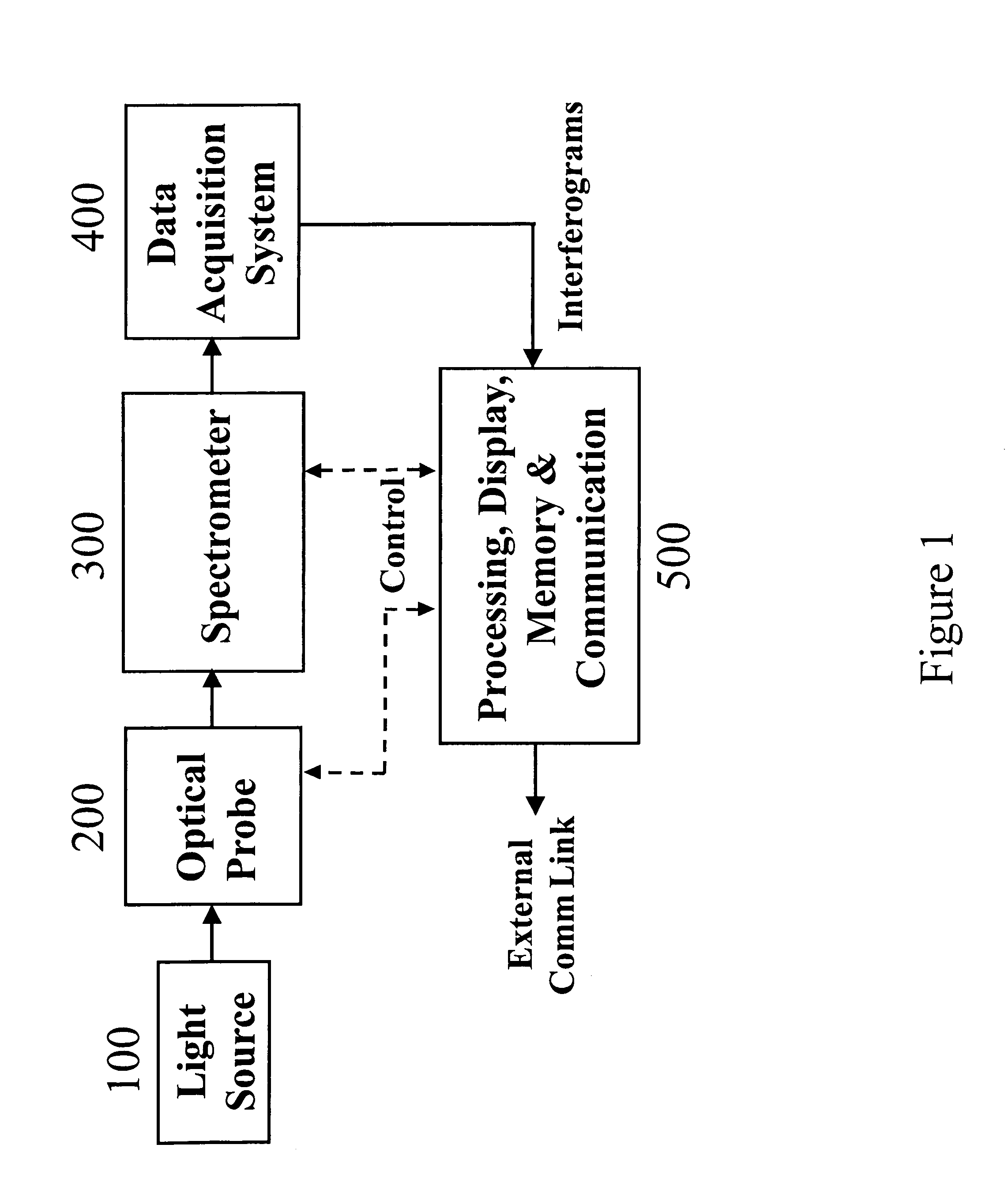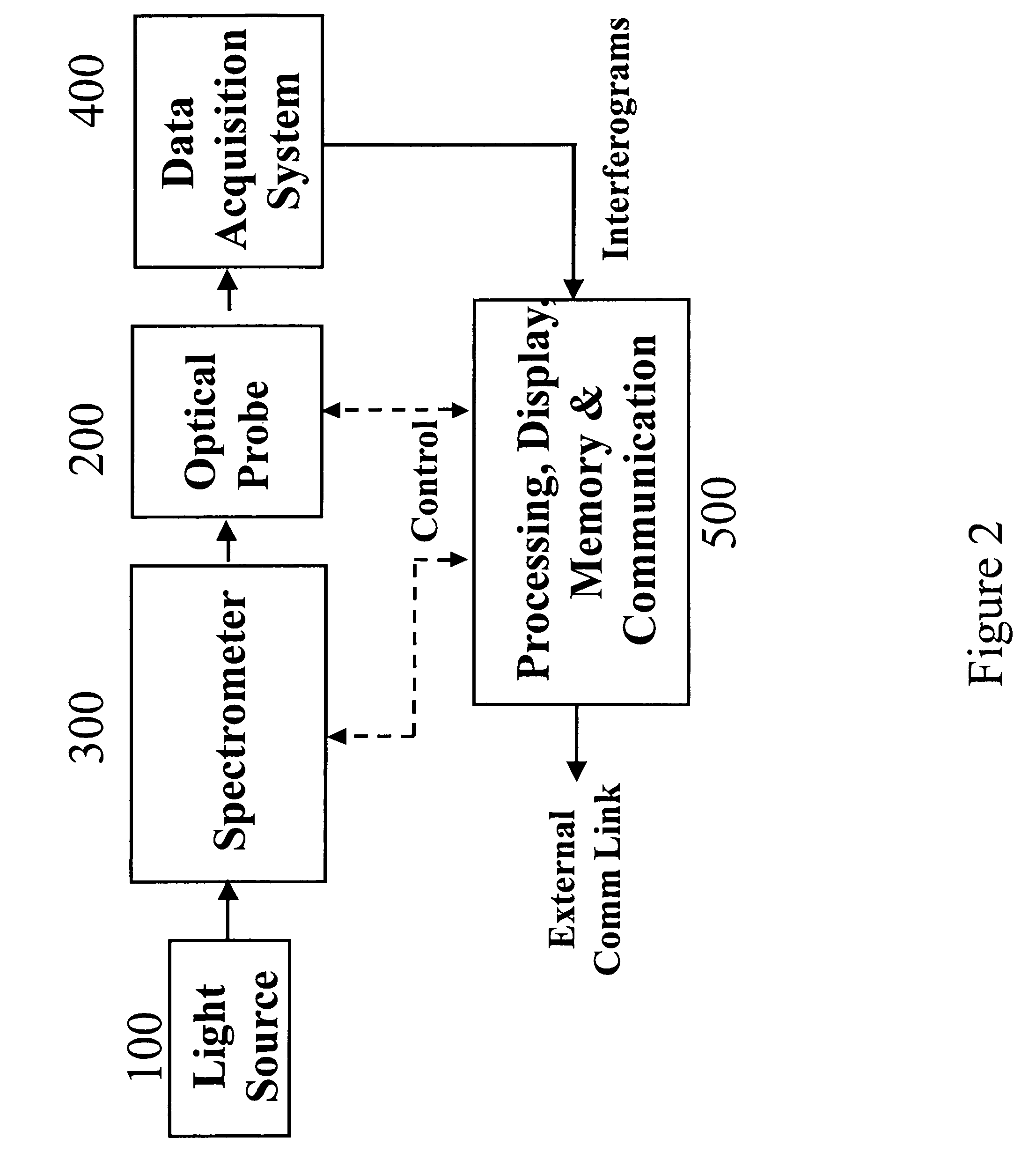Method of making optical probes for non-invasive analyte measurements
a non-invasive analyte and optical probe technology, applied in waveguides, instruments, applications, etc., can solve problems such as optical probe performance, achieve the effects of improving physical robustness, reducing failure rates, and being difficult to verify
- Summary
- Abstract
- Description
- Claims
- Application Information
AI Technical Summary
Benefits of technology
Problems solved by technology
Method used
Image
Examples
example embodiments
[0128]FIG. 29 shows a diagram of a preferred embodiment of the present invention that is a linear stack comprised of three ribbons. The outer two ribbons are comprised of illumination fibers while the central ribbon is comprised of collection fibers. An 80-micron spacer is included between each illumination ribbon and the collection ribbon in order to reject unwanted, short-path light. The optical fibers in this design are 0.65 NA silica core, Teflon clad with a core diameter of 200 microns. The illumination fibers are arranged into a circular input ferrule at one end of the optical probe. The collection fibers are arranged into a circular output ferule that is held at approximately 90 degrees to the optical probe input. The spatial locations of the input and output can be in any position consistent with interfacing to the required subsystems.
[0129]FIG. 30 shows non-invasive near-infrared absorbance spectra acquired from forearm tissue using the optical probe shown in FIG. 29. 558 s...
PUM
 Login to View More
Login to View More Abstract
Description
Claims
Application Information
 Login to View More
Login to View More - R&D
- Intellectual Property
- Life Sciences
- Materials
- Tech Scout
- Unparalleled Data Quality
- Higher Quality Content
- 60% Fewer Hallucinations
Browse by: Latest US Patents, China's latest patents, Technical Efficacy Thesaurus, Application Domain, Technology Topic, Popular Technical Reports.
© 2025 PatSnap. All rights reserved.Legal|Privacy policy|Modern Slavery Act Transparency Statement|Sitemap|About US| Contact US: help@patsnap.com



